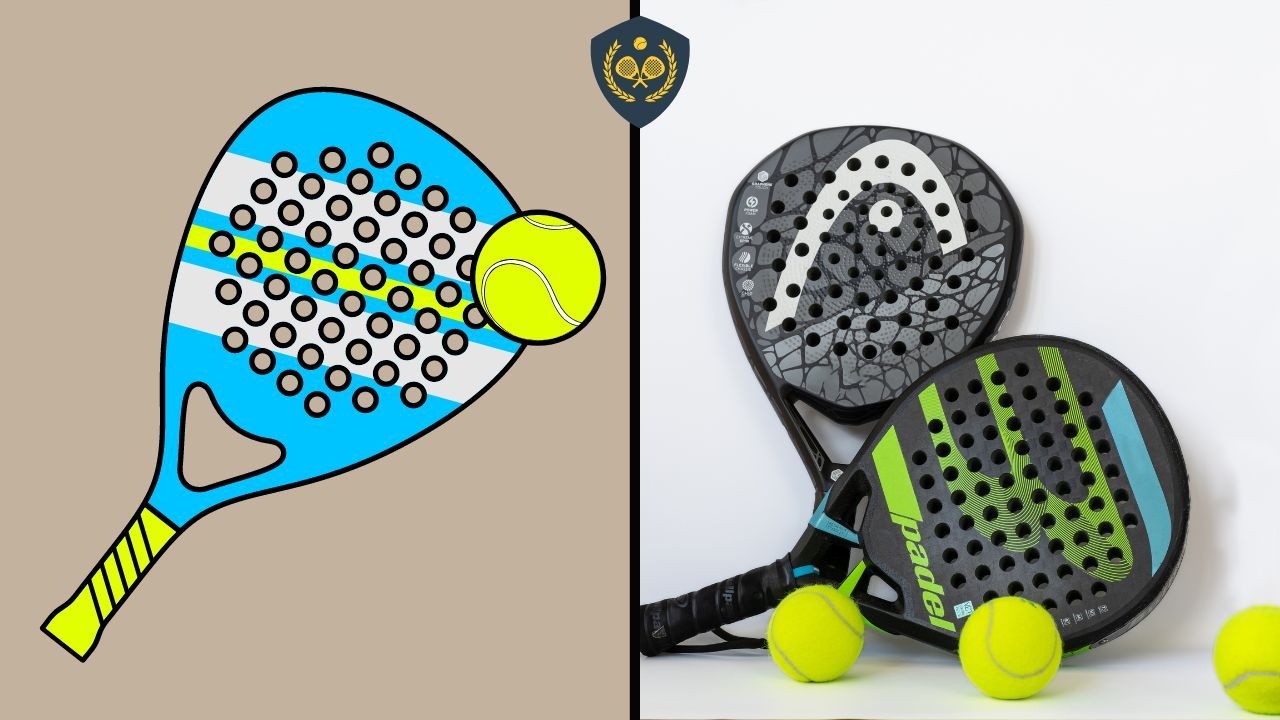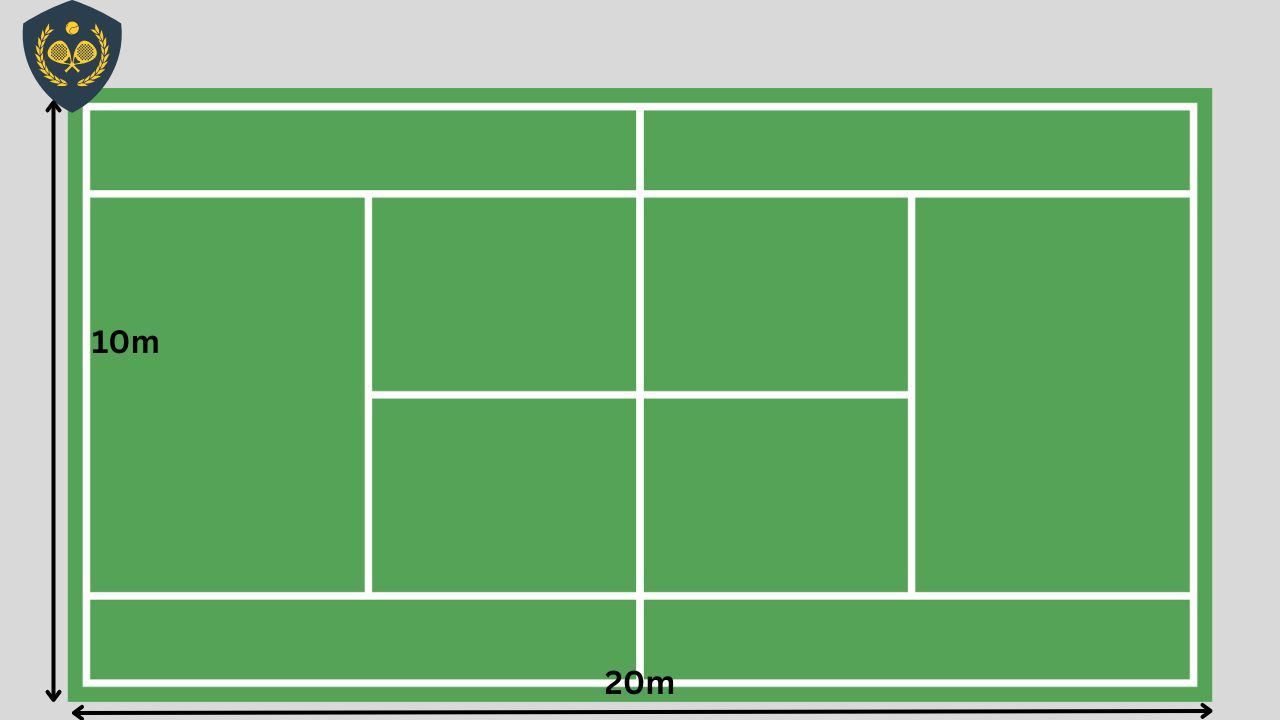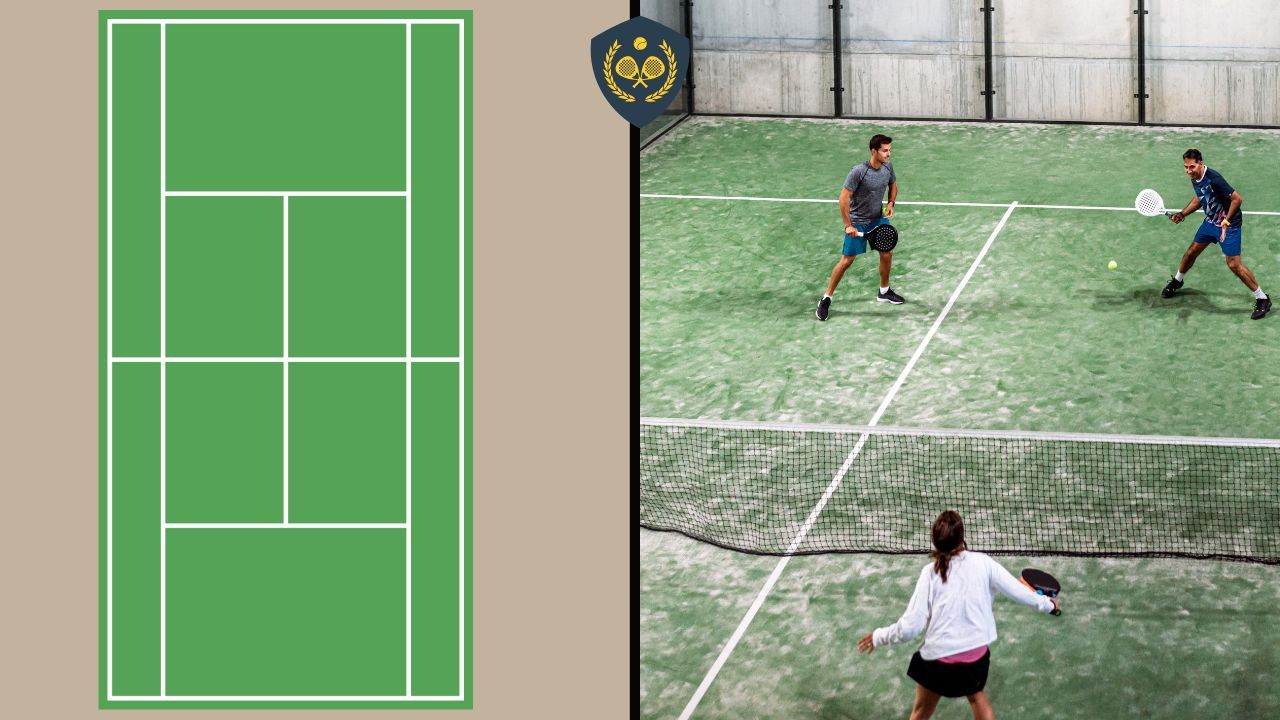What Is Padel Tennis? A Guide to This Thrilling Sport
Discover padel tennis, the fast-paced racket sport combining elements of tennis and squash. Learn its rules, origins, and why it's gaining global fame!

What is Padel Tennis, you ask? Well, imagine a sport that's like tennis and squash had a lovechild - a sport so addictive that once you start playing, you'll be addicted faster than you can say "racket." It's like tennis, but instead of battling it out on a vast court, you're in an enclosed space, bouncing balls off walls like a human pinball. Intrigued?
You should be! Padel Tennis is a thrilling, fast-paced game that's taking the world by storm. In this article, we're diving into the heart of Padel Tennis, exploring its origins, rules, and why it's becoming the next big thing in racquet sports. So, grab your racket and get ready for a smashing good time!
What Is Padel?
Padel, often referred to as Padel Tennis, is a racquet sport that combines elements of tennis and squash. It is typically played in doubles on an enclosed court about one-third the size of a tennis court. The court is surrounded by glass walls and fencing, allowing the ball to remain in play even after rebounding off the walls. Padel can be played both indoors and outdoors.

Key Features & Rules of Padel
- Scoring: Padel uses the same scoring system as tennis, with games, sets, and matches. The scoring terminology is also similar, with terms like "love," "15," "30," and "40."
- Service: The ball must be served underhand, diagonally across the net, and it must bounce once in the service box on the opposite side of the court. The receiver can let the ball jump or volley it directly.
- Ball: Padel is played with a solid, puncture-resistant ball that is similar in size and weight to a tennis ball but has less pressure.
- Rackets: Players use solid rackets with no strings, often perforated with holes. These rackets are shorter than tennis rackets but longer than squash rackets.
Padel Court Dimensions
The dimensions of a standard Padel court are as follows:
- Length: 20m (approximately 65.6 feet)
- Width: 10m (approximately 32.8 feet)

These dimensions include the playing area, which is enclosed by glass walls and fencing. Padel courts are designed to be compact compared to traditional tennis courts, making the game more accessible and encouraging fast-paced play.
The glass walls and fencing surrounding the court are integral to Padel, as they allow the ball to remain in play even after rebounding off the walls, adding a unique dynamic to the sport.
Padel courts are typically 20 meters long and 10 meters wide, including the walls. The playing area itself is approximately 10 meters by 20 meters.
The Padel Court is a unique sporting arena that combines the best of tennis and squash, creating a dynamic and exciting playing field. Enclosed by glass walls and fencing, this compact court measures approximately 10 meters by 20 meters, providing an intimate yet exhilarating space for players.

Benefits
Padel is welcoming to players of all skill levels, making it a sport that can be enjoyed by families, friends, and individuals looking for a fun way to stay active.
The enclosed court design and doubles format create a social atmosphere where players can bond and have a great time together. Padel provides a full-body workout, helping players improve their cardiovascular fitness, agility, and hand-eye coordination.
The unique wall-play element adds excitement and unpredictability to the game, keeping players on their toes and enhancing the overall experience. Padel can be played both indoors and outdoors, allowing enthusiasts to enjoy the sport throughout the year regardless of the weather.
Padel Racquet & Ball
In Padel, the racquet and ball are your trusty companions, and they play a pivotal role in shaping the game's excitement and dynamics. Padel racquets are solid and perforated with holes, making them unique in the world of racquet sports. They are shorter than tennis racquets but longer than squash racquets, offering a perfect blend of control and power.
Padel racquets strike the ideal balance between control and power, allowing players to execute precise shots and powerful drives. The unique perforations on Padel racquets contribute to spin control and aerodynamics, enabling players to create strategic shots.
Padel balls are designed to withstand intense gameplay, ensuring consistent bounce and durability. The combination of racquet design and ball characteristics results in a fast-paced game with thrilling rallies.
Padel's distinct racquet and ball features encourage players to adapt their playstyle, fostering creativity and strategic thinking.
Scoring
Scoring in Padel tennis follows a system similar to traditional tennis. Here are the key aspects of scoring in Padel:
- Points: The scoring in Padel starts with "love" (0 points) and progresses in increments of 15 points: 15, 30, and 40.
- Deuce: If both teams or players are tied at 40-40, it's called "deuce." In this situation, a player or team must win two consecutive points to win the game.
- Advantage: If a player or team wins a point following a deuce, they have the "advantage." If they win the next point as well, they win the game. However, if they lose the point, the score returns to deuce.
- Game: To win a game, a player or team must score four points with a margin of two. For example, a game can be won at 40-0, 40-15, 40-30, or following an advantage.
- Set: Matches in Padel tennis are typically played in sets, with each set consisting of several games. The exact number of games needed to win a set may vary depending on local rules or tournament regulations.
- Match: To win a Padel tennis match, a player or team must win a specified number of sets, usually the best of three or five groups, depending on the level of play and tournament format.
What Is Padel Tennis
FAQs
Q: What is the difference between padel and tennis?
Answer: The difference between padel and tennis is the court size.
Tennis: Tennis is typically played on a rectangular court that measures 78 feet (23.77 meters) in length 27 feet (8.23 meters) in width for singles matches, and 36 feet (10.97 meters) in width for doubles matches. The court is divided into two sides by a net, and the boundaries are marked by lines.
Padel: Padel is played on a smaller and enclosed court, about one-third the size of a tennis court. The dimensions of a padel court are usually 66 feet (20 meters) in length and 33 feet (10 meters) in width. Padel courts are surrounded by walls, and the playing area is enclosed within glass or wire mesh.
Tennis Rackets: Tennis rackets are more oversized and have a more extended handle. They are designed for hitting the ball over the net with power and precision.
Padel Rackets: Padel rackets are smaller and have no longer handles. They are solid, with no strings, and have holes in the surface. Padel rackets are designed for volleying and placing the ball strategically, rather than generating power through swings.
Tennis Balls: Tennis uses a larger and heavier ball with a solid core covered in felt. It's designed for longer distances and a faster pace of tennis play.
Padel Balls: Padel uses a smaller, pressurized ball with holes, similar to a tennis ball but slightly smaller. Padel balls are designed to bounce less, making the game more conducive to rallies and volleys.
Tennis Scoring: Tennis uses a scoring system based on points, games, and sets. Points: 15, 30, 40, and a set is typically played for six or seven games. Matches are usually best-of-three sets or best-of-five sets for men's Grand Slam events.
Padel Scoring: Padel typically uses a simplified scoring system similar to tennis, but it's often played using no-advantage scoring, where a game is won by the first team to win four points with a margin of two points.
Tennis Serving: In tennis, the serve is made from behind the baseline and must clear the net and land in the opponent's service box diagonally.
Padel Serving: In padel, the serve must be underhand and made diagonally across the court, bouncing off the back wall before reaching the opponent.
Tennis involves more running and requires players to cover the entire court. It places a premium on power, agility, and endurance.
Padel is played at a slower pace due to the smaller court and the use of walls. It emphasizes touch, placement, and teamwork, as players often work together to control the ball.
Q: Is Padel tennis easier than tennis?
Answer: Yes, many people find padel tennis easier to learn and play compared to traditional tennis due to its smaller court size and slower pace.
Q: What is the padel tennis?
Answer: Padel tennis, often referred to simply as "padel," is a racquet sport that combines elements of tennis, squash, and racquetball. It is typically played in doubles on a small, enclosed court with walls. Here are some key characteristics of padel tennis:
- Court: Padel is played on a rectangular court that is about one-third the size of a standard tennis court. The dimensions are approximately 66 feet (20 meters) in length and 33 feet (10 meters) in width. The court is enclosed by transparent walls made of glass or wire mesh.
- Rackets: Padel rackets are solid with no strings and are perforated with holes. They are smaller and more compact than tennis rackets, and they have no longer handles.
- Ball: Padel uses a pressurized ball that is similar in size and appearance to a tennis ball but is slightly smaller. The smaller ball, along with the enclosed court, leads to different playing dynamics compared to tennis.
Q: Why is it called padel?
Answer: The name "padel" for the racquet sport likely has its origins in the Spanish language. Padel tennis, or simply "padel," is particularly popular in Spain and Latin American countries. In Spanish, the word "padel" (pronounced pah-DEL) refers to the sport itself. The name might not have a specific etymological origin but is simply the term used to describe this particular racquet sport in Spanish-speaking regions.
The sport was invented in Mexico in the 1960s by Enrique Corcuera, and it gained popularity in Spain in the following decades. As it became established in Spanish-speaking countries, the name "padel" stuck and is now widely recognized and used to refer to this racquet sport.
Q: Why is Padel so popular?
Answer: Padel has gained popularity for several reasons:
- Accessibility: Padel is relatively easy to pick up for beginners, making it accessible to a wide range of people. The smaller court and use of walls mean that rallies are generally shorter, and it's easier for beginners to keep the ball in play.
- Social Aspect: Padel is often played in doubles, which fosters a social and collaborative atmosphere on the court. Many players enjoy the camaraderie and teamwork aspect of the game.
- Physical Demands: While padel can be physically demanding, it is generally less strenuous than tennis due to the smaller court and slower pace. This makes it appealing to people of various fitness levels and ages.
- Quick Learning Curve: Compared to tennis, Padel has a faster learning curve. Players can develop their skills and start enjoying the game sooner, which is appealing to newcomers.
- Year-Round Play: Padel can be played year-round, as it is often played on enclosed courts. This means that weather conditions don't usually disrupt play, making it more consistent and reliable for enthusiasts.
Key Takeaways!
Sponsored By

